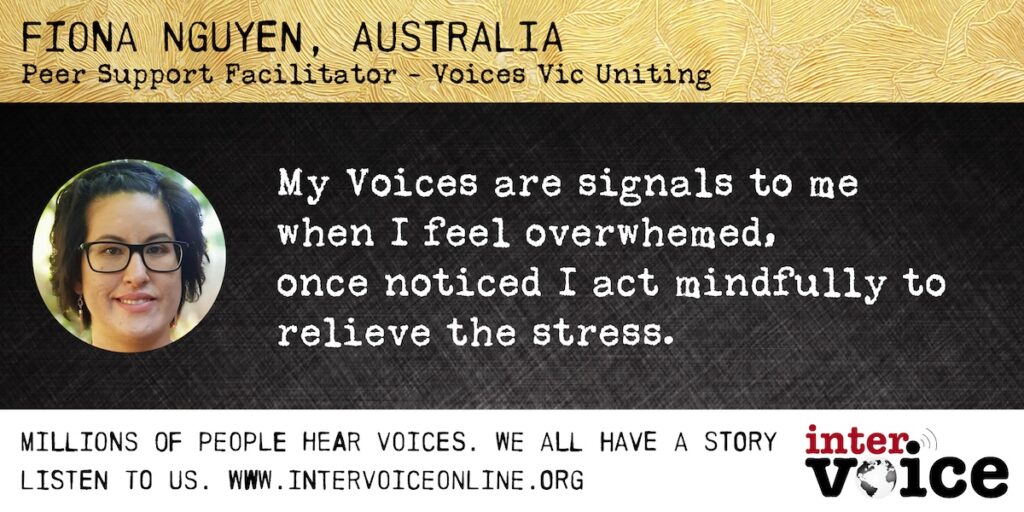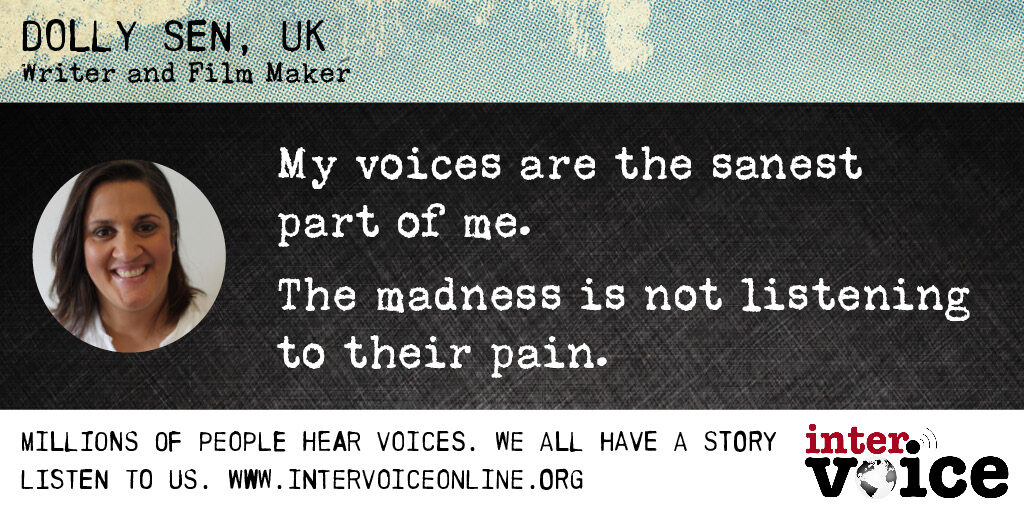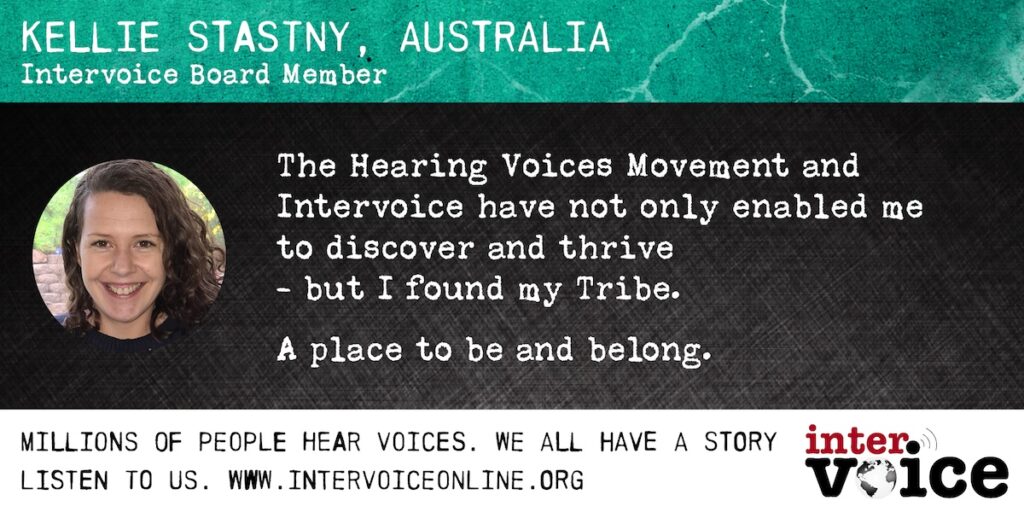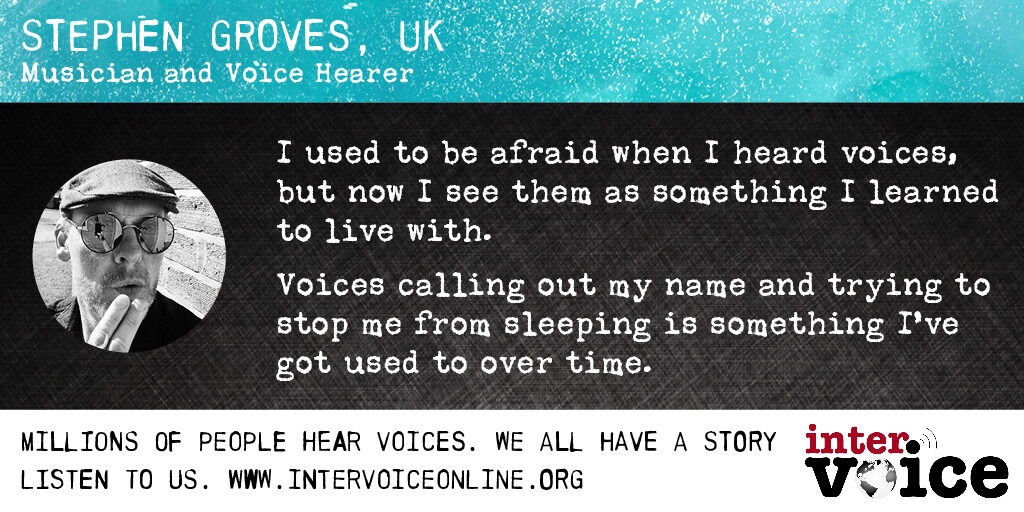5. When the Technique can be of Use
The technique will be particularly beneficial for those with prior experience of communicating with their voices.
Some voice hearers don’t know that they can communicate with their voices. They are too afraid for them or didn’t even think of the idea. Communication first has to become established, the facilitator can give advice. Some voice hearers can’t or don’t want to communicate with their voices. For those this method is not of use.
The person has to feel safe enough to do the exercise.
Again, the facilitator tries to help you at feeling at ease with this exciting and often new exercise. You stay in control, the facilitator focuses on that. You are responsible for staying present, the facilitator encourages it.
Time should be spent collaboratively with the voice-hearer for planning suitable questions to put to the voices.
It is fine if you know what you can expect. It is important that you plan what you want to achieve, that you express what your concerns are. What you want to learn or know.
The voice-hearer should be given the opportunity to use the chairs appropriately in response to what the voices have said; this may become easier over time.
6. When the Technique can be Dangerous
When the voice-hearer feels they may be unable to maintain control during the interview.
If the facilitator senses that, she asks you to return to the beginning position. She will not proceed with the talking to the voice. The importance of having some form of control is stressed. If you can’t stay in control the reasons ought to be discussed.
It is necessary that the voice hearer and the facilitator have confidence that the voice hearer can take over at any moment. If necessary the facilitator doesn’t proceed the talking to the voices until both the voice hearer and the facilitator are convinced that control is possible next time. Other work should be done beforehand to pave the way.
If there is a poor understanding between the interviewer and the voice-hearer.
If this is the case it should be put on the agenda immediately.
Doing this kind of work together demands proper understanding. Things that hinder understanding must be discussed and cleared, in order to be able to proceed. Both facilitator and voice hearer are equally responsible for that. The most hindering aspect on the side of the facilitator is when she aims too much in the direction of change.
When the interviewer responds inappropriately to the voices, in either tone or content.
This seems obvious, but if the facilitator isn’t aware (facilitators are human beings, not perfect) the voice hearer should mention that. If a voice expresses anger towards the facilitator it must be dealt with properly. Often there is a good reason for it and that needs to be explored.
The facilitator shouldn’t take remarks too personally.
When debriefing does not take place.
The voice hearer must leave the room at ease, debriefing is for checking that. If the influence of the voice is still too strong when time is up, time should be taken in order to make the voice hearer at ease.
When the chair is not clearly used.
Sometimes voices are competing with eachother in order to get space. The facilitator must pay attention to that, negotiate and set a proper agenda for all of them.
When talking to the voices becomes a goal in itself
Some voice hearers become so fascinated with this procedure that it becomes a game instead of a mean to achieve certain goal (e.g. autonomy, better relationship).
7. Goals
- Exploration of the voices’ underlying motives.
- To help the individual feel more detached from the voice-hearing experience.
- Enhancing a more healthy dialogue.
- Solving conflicts.
- Gather information about the voices and the role they play in actual life and in the life history.
- Discover what kind of action is required.
- Start an internal process of change.
8. Examples
Karen is a 28 year old woman.
She had been in psychiatric hospital for 4 years. Most of the time in the seclusion room, to prevent her from hurting herself. The voices told her to do so. She was heavily medicated but it didn’t make the voices go away or diminish their impact on her. At a certain moment she decided not to hurt herself anymore. Then she could come out of the hospital and live on her own. She married. Although she lived independently the voices restricted her life. Almost all day they were talking to her. Criticising, commenting and telling her to hurt herself, which she didn’t. It costed Karen a lot of energy.
In the first interview it appeared that Karen heard four male voices. They all where negative towards her and her actions. Karen agreed that the facilitator talked to the voices.
The facilitator followed the above mentioned procedure. The voices subsequently vented their anger with Karen and all four told about the history of their relationship with Karen.
The story that came out was the following. The voices came in the life of Karen when she was approximately 4 years old. Karen was lonely and had experienced awfull things. The voices than supported Karen. They helped her to survive. As a child and adolescent she accepted the support of the voices. They had a good relationship with Karen.
When Karen was 20 years old she became member of a religious sect. She felt happy and safe in that community and at a certain moment she told about her voices. The other members of the sect expressed their opinion that the voices were instruments of the devil and urged Karen to get rid of these voices. A fight between Karen and the voices was initiated and the voices transformed in very negative ones.
This was the beginning of Karen’s journey in psychiatry.
The relational history that was depicted Karen had forgotten. She wasn’t aware anymore of what happened, so absorbed she was by the negativity of the voices. Nobody discussed the history of the voices with Karen. In the psychiatric clinic professionals were also trying to help Karen to get rid of the voices, which didn’t succeed.
Once the voices expressed their frustration it became obvious that their original intent was to support Karen. They expressed this frustration and Karen could grasp this. After the session Karen started intensive dialogues with the voices at home. In a more constructive way.
At the next session a month later two voices had disappeared.
Two voice dialogue sessions were enough to restore the relationship between Karen and her two remaining but now positive voices. It appeared that Karen developed to a autonomous person who wasn’t needing that much support anymore.
The voices disappeared and stayed away until now, years later. Karen dared to taper down the medication. She wrote that she now hears only one supportive voice that she doesn’t want to leave and leads a happy life with almost no medication.
So the talking to the voices gave way to transformation of the voices back into the original supportive voices. At last Karen didn’t need them anymore and they could withdraw.
For more information about the voice dialogue method we recommend the following sites:
Institute for Transformational Psychology (Netherlands)
The objective of the Institute for is to bring Transformational Psychology to the attention of more people and to advance its use. To achieve these goals the ITP organises lectures, training’s, and an educational program. The methods and techniques the ITP uses are not a target in itself, but instruments to achieve awareness and integration of a number of important principles of transformation.
Voice Dialogue International
The website of the originators of Voice Dialogue, Hal and Sidra Stone. Voice Dialogue, Relationship, and the Psychology of Selves can be used by individuals for their own personal growth or by professionals in the fields of psychotherapy, counseling, personal coaching, and business and organizational consulting. Their psychospiritual approach to consciousness and transformation includes an in-depth study of the many selves or subpersonalities that make up the psyche, as well as work with dreams, archetypal bonding patterns, and body energy fields.












